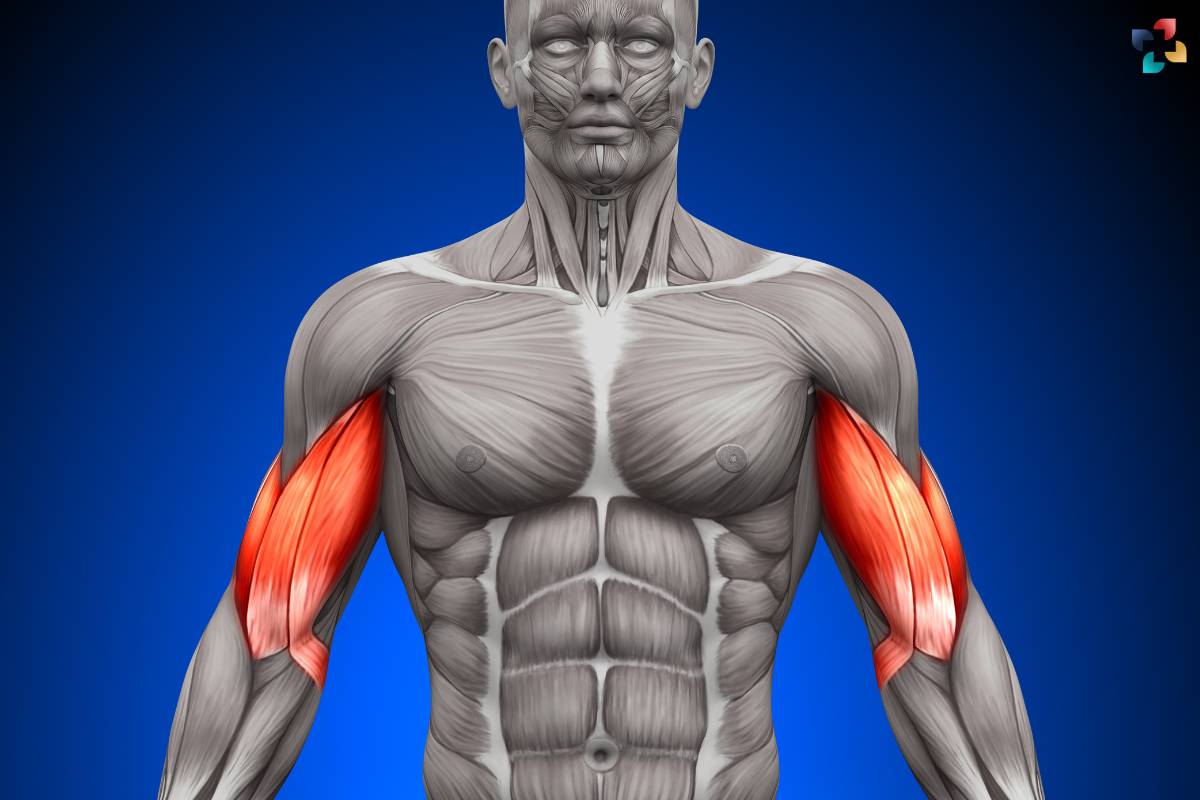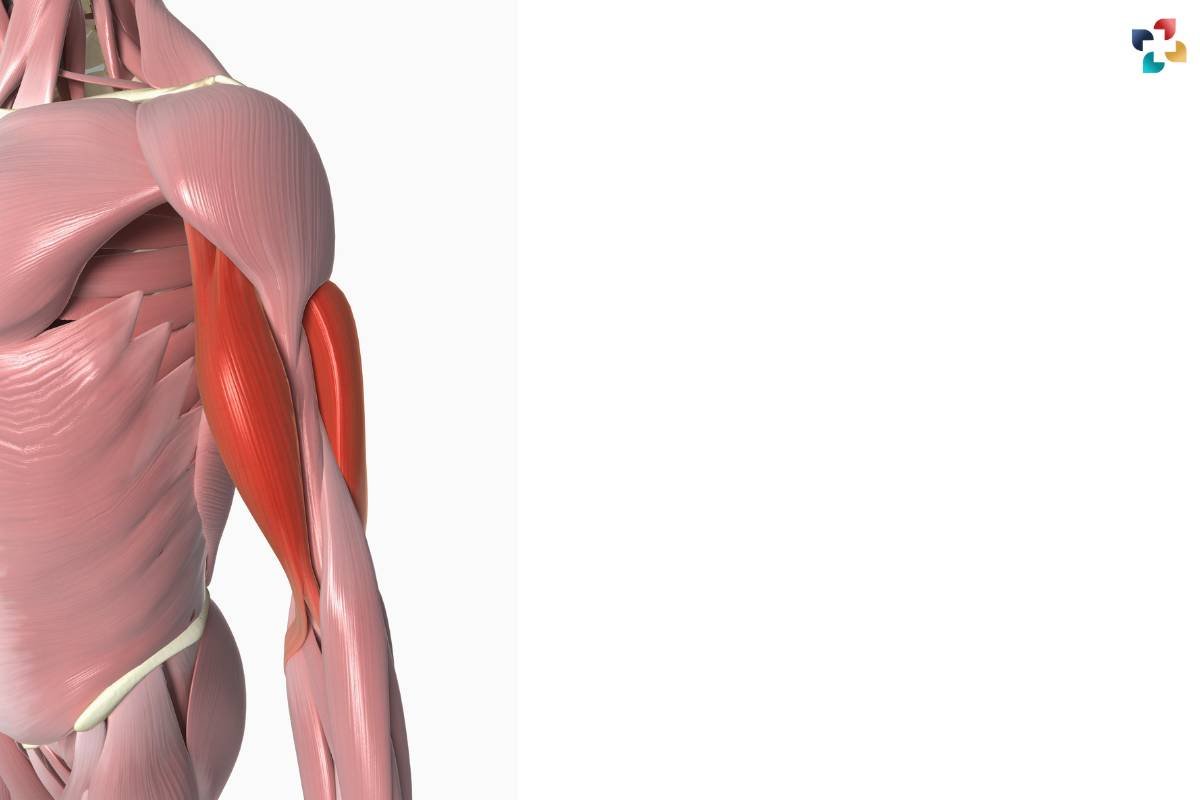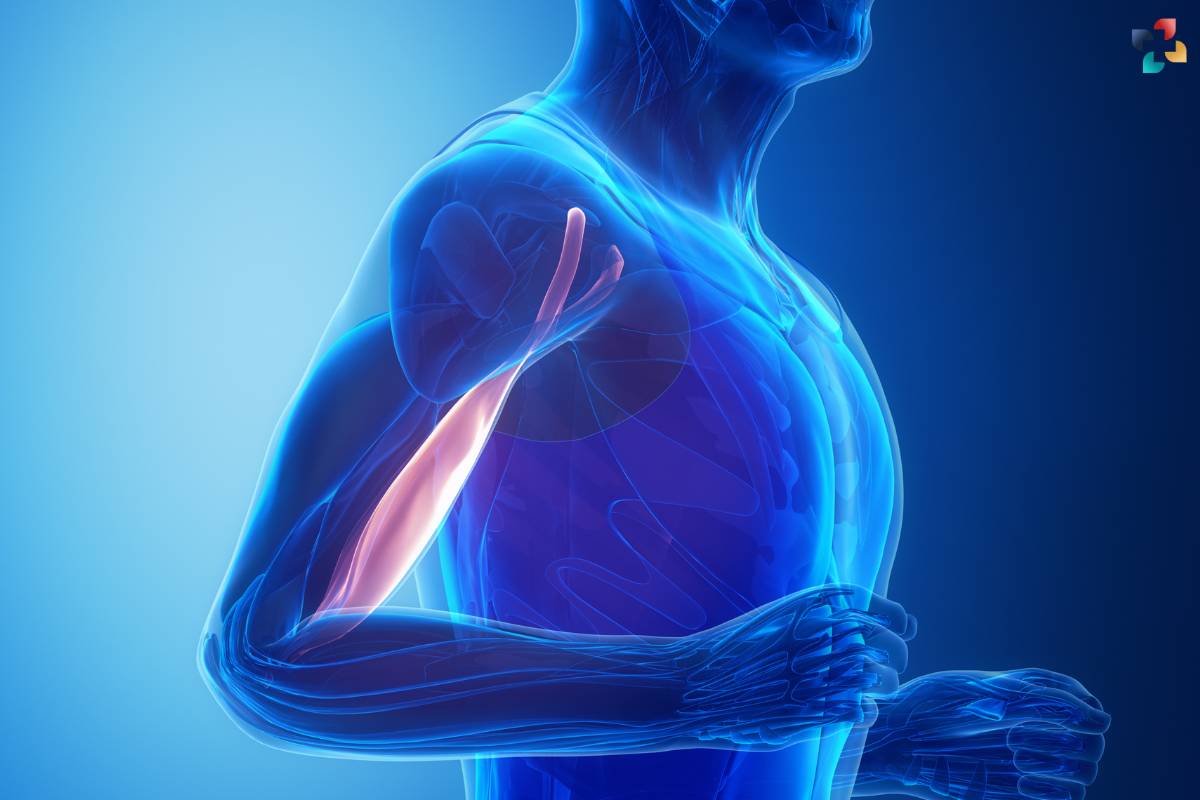The biceps brachii, often referred to simply as the biceps, is one of the most recognizable muscles in the human body. Situated in the front part of the upper arm, the biceps brachii plays a crucial role in various everyday movements, from lifting groceries to swinging a tennis racket. In this comprehensive guide, we delve deep into the anatomy, function, exercises, and common injuries associated with the biceps brachii.
Anatomy of Biceps Brachii
The biceps brachii is a two-headed muscle that originates from two distinct points on the scapula (shoulder blade) and inserts into the radius bone of the forearm. Its long head originates from the supraglenoid tubercle of the scapula, while the short head originates from the coracoid process, both of which converge to form the main bulk of the muscle belly. The biceps brachii crosses both the shoulder and elbow joints, allowing it to contribute to movements at both joints.
Function of Biceps Brachii

The primary function of the biceps brachii is elbow flexion, which involves bending the elbow to bring the forearm closer to the upper arm. Additionally, the biceps brachii assists in supination, the movement that rotates the forearm from a palm-down to a palm-up position. These actions are crucial for various activities, including lifting, pulling, and gripping objects.
Exercises to Target Biceps Brachii
1. Barbell Biceps Curl
Stand upright with a barbell in your hands, palms facing forward, and elbows close to your body. Curl the barbell upwards towards your shoulders, keeping your upper arms stationary. Slowly lower the barbell back to the starting position.
2. Dumbbell Hammer Curl
Hold a dumbbell in each hand with your palms facing inward towards your body. Keeping your elbows close to your sides, curl the dumbbells upwards while maintaining a neutral wrist position. Lower the dumbbells back to the starting position.
3. Preacher Curl
Sit on a preacher curl bench with your upper arms resting on the padded surface and your chest pressed against the pad. Grasp a barbell or dumbbell with an underhand grip and curl the weight upwards towards your shoulders. Lower the weight back down with control.
4. Incline Dumbbell Curl
Sit on an incline bench set to a 45-degree angle, holding a dumbbell in each hand with your arms fully extended towards the floor. Curl the dumbbells upwards towards your shoulders while keeping your upper arms stationary. Slowly lower the dumbbells back to the starting position.
Common Injuries Associated with Biceps Brachii:

Biceps brachii injuries can significantly impact daily activities and athletic performance, making it essential to understand their causes, symptoms, and treatment options. Here, we delve deeper into the common injuries associated with the biceps brachii and explore preventive measures and rehabilitation techniques.
1. Biceps Tendonitis
Biceps tendonitis, also known as bicipital tendonitis, is a prevalent injury among athletes, weightlifters, and individuals who perform repetitive overhead movements. It occurs when the biceps tendon becomes inflamed, usually due to overuse, repetitive stress, or poor biomechanics. Common symptoms of biceps tendonitis include pain and tenderness in the front of the shoulder, particularly during activities that involve lifting or reaching overhead. Rest, ice, anti-inflammatory medications, and physical therapy exercises are typically prescribed to alleviate symptoms and promote healing.
2. Biceps Tendon Rupture
A biceps tendon rupture is a severe injury that occurs when the tendon tears partially or completely away from its attachment site at the shoulder or elbow. This injury often results from sudden, forceful movements, such as lifting a heavy object or performing an explosive movement. Symptoms of a biceps tendon rupture include a sudden, sharp pain in the upper arm, followed by weakness and bruising. Treatment options for a biceps tendon rupture may include conservative measures such as rest, ice, and physical therapy or surgical intervention to repair the torn tendon.
3. Strain or Sprain
Strains and sprains of the biceps brachii muscle can occur when the muscle fibers are overstretched or torn, typically due to excessive or improper training techniques. Symptoms of a biceps strain or sprain may include pain, swelling, bruising, and limited range of motion in the affected arm. Treatment for biceps strains and sprains typically involves rest, ice, compression, and elevation (RICE protocol), along with gentle stretching and strengthening exercises to promote healing and prevent further injury.
Preventing Biceps Brachii Injuries

To reduce the risk of biceps brachii injuries, individuals should:
- Warm up properly before engaging in physical activity, including dynamic stretches and light cardiovascular exercises.
- Use proper lifting techniques, including lifting with the legs rather than the back and avoiding sudden, jerky movements.
- Gradually increase the intensity and duration of workouts to allow the muscles to adapt and strengthen over time.
- Incorporate cross-training and variety into workout routines to prevent overuse injuries and muscle imbalances.
- Listen to your body and avoid pushing through pain or discomfort, as this can lead to overuse injuries and exacerbate existing conditions.
Conclusion
In conclusion, the biceps brachii is a vital muscle with a wide range of functions in everyday movements and athletic endeavors. By understanding its anatomy, function, and proper training techniques, individuals can effectively target and strengthen their biceps for improved performance and reduced risk of injury. Incorporating a variety of biceps exercises into your workout routine and prioritizing proper form and technique will help you unlock the full potential of your biceps brachii.
FAQs
1. What is the primary function of the biceps brachii muscle?
The biceps brachii muscle is responsible for flexing the elbow joint and supinating the forearm, which means rotating the palm upward.
2. What causes biceps brachii injuries?
Biceps brachii injuries can result from overuse, repetitive motions, sudden forceful movements, improper lifting techniques, or direct trauma to the muscle.
3. How can I differentiate between biceps tendonitis and a biceps tendon rupture?
Biceps tendonitis typically presents with gradual onset pain and inflammation at the front of the shoulder, whereas a biceps tendon rupture may cause sudden, sharp pain followed by weakness and bruising in the upper arm.
4. Are there any specific exercises to strengthen the biceps brachii muscle?
Yes, exercises such as biceps curls, hammer curls, chin-ups, and preacher curls target the biceps brachii and help strengthen and develop the muscles.
5. What should I do if I suspect a biceps brachii injury?
If you suspect a biceps brachii injury, it is essential to rest the affected arm, apply ice to reduce swelling and avoid activities that exacerbate pain. Seek medical attention for a proper diagnosis and treatment plan tailored to your specific condition.











